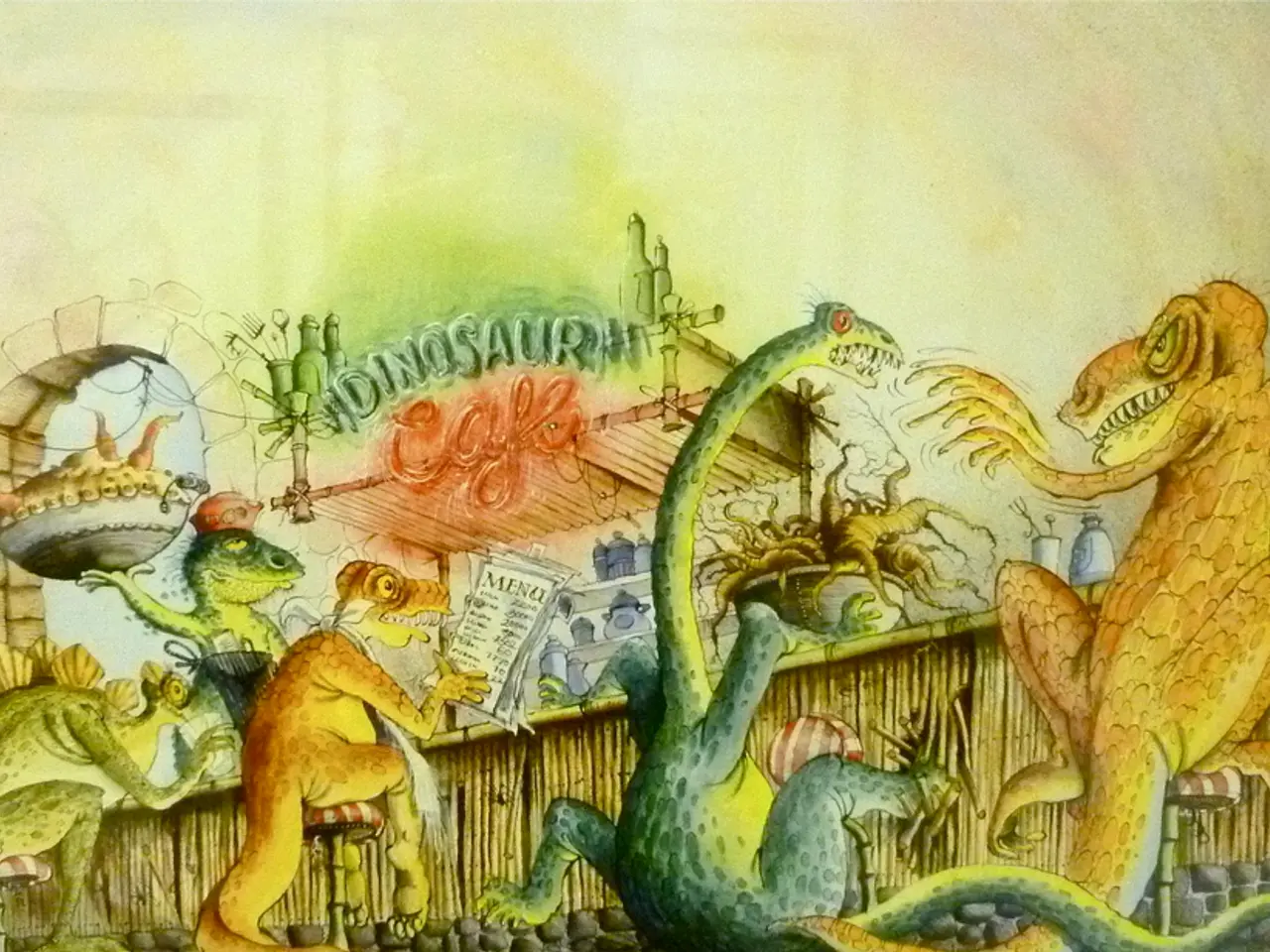Manganese Blue, a pigment believed to be extinct, uncovered in Jackson Pollock's artifact.
In a groundbreaking discovery, a team of researchers has shed new light on the intriguing composition of Jackson Pollock's 1948 masterpiece, Number 1A. The findings, published in the Proceedings of the National Academy of Sciences (PNAS), reveal that the striking turquoise colour in the painting is due to an extinct variety of manganese blue paint.
Manganese blue, a synthetic pigment developed chemically, was popular in the 20th century and was known for its bright, turquoise colour. It was used not only in art but also in other applications, such as colouring cement for swimming pools. However, the pigment was phased out in the 1990s due to environmental concerns related to its manufacture.
The painting Number 1A, which is currently a mainstay in the Museum of Modern Art (MoMA) in New York, has an expansive celestial atmosphere. The new findings, according to MoMA conservation scientist Abed Haddad, are crucial for conservation efforts around the painting, as many pigments are sensitive to environmental factors such as intense light, ultraviolet radiation, and fluctuations in humidity.
The study of Number 1A using Raman spectroscopy was conducted by the authors of the PNAS paper. The researchers identified manganese blue as one of the ingredients in the painting, highlighting the ability of molecular inorganic pigments to leverage ligand field effects to create multiple visible absorption features. The discovery also showcases the use of lattice electrostatics to fine-tune the colour.
The authors of the PNAS paper, who hail from Stanford University, City College of New York, and MoMA's conservation department, believe that the new findings can offer insights into the development of Pollock's artistic practice. They suggest that the study can help contextualize Number 1A within Pollock's oeuvre and understand trends in the use of certain colourants over time.
Stanford chemist Edward Solomon discussed the origin of the striking colour used in Number 1A by Pollock. He noted that the manganese blue pigment used in the painting was a synthetic pigment recognized in scientific analysis. The exact individual or company who first developed manganese blue is not specified in the available sources.
The new findings stand to help conservation efforts around Number 1A, which is hoped to be the source of further study for a very long time. The painting, with its expansive celestial atmosphere, continues to captivate audiences and art enthusiasts alike, making it a valuable piece in the history of modern art.
Read also:
- Transforming Digital Inventories in the Food Industry: A Comprehensive Guide for Food Businesses
- Munich Airport Unveils Its New Electrical Vehicle Charging Parksite
- Vehicle electrification and bidirectional charging technologies could potentially reduce EU energy expenses by a staggering €22 billion annually by the year 2040.
- Rapid Construction of Rajasthan's 435 Megawatt Solar Power Plant in Eight Months Reduces Carbon Dioxide Emissions by Over 700,000 Tons







